
The Evolution of Grief – Why We Have It and Why We Feel It
Why Grief Exists: An Evolutionary, Neural, and Social View – Origins, Functions, and Mechanisms
Primary Category: Scam Victim Recovery Psychology / Neurology of Recovery
Authors:
• Vianey Gonzalez B.Sc(Psych) – Licensed Psychologist, Specialty in Crime Victim Trauma Therapy, Neuropsychologist, Certified Deception Professional, Psychology Advisory Panel & Director of the Society of Citizens Against Relationship Scams Inc.
• Tim McGuinness, Ph.D., DFin, MCPO, MAnth – Anthropologist, Scientist, Polymath, Director of the Society of Citizens Against Relationship Scams Inc.
Author Biographies Below
About This Article
Grief is more than just discomfort; it is an evolutionarily rooted response arising from the same attachment systems that enable long-term social life. It argues grief is partly a byproduct of bonding mechanisms and partly adaptive, supporting recalibration after loss, soliciting social support, signaling commitment, shifting care toward surviving kin, and encouraging short-term risk avoidance. Comparative evidence from elephants, cetaceans, great apes, and corvids shows mourning-like behaviors in species with prolonged parental care and complex alliances. Neurobiologically, grief engages attachment and pain circuits, elevates stress hormones, and gradually recruits prefrontal regions associated with regulation and meaning making. In humans, language and culture amplify these processes through rituals that maintain cohesion. Grief is presented as costly in the short term but beneficial over a lifetime for learning, cooperation, kin protection, and group stability.
Note: This article is intended for informational purposes and does not replace professional medical advice. If you are experiencing distress, please consult a qualified mental health professional.

Why Grief Exists: An Evolutionary, Neural, and Social View – Origins, Functions, and Mechanisms
Author’s Note
Grief and betrayal trauma are the twin forces most relationship-scam victims face from the end of the crime through to the final stages of their recovery. They feel like monsters, but they are not. Grief serves an important evolutionary role in humans and other social animals. It is part of the social necessity of attachment, and when attachment ends, pain follows by design.
This article offers clear insight into why grief exists, what it does, and how it supports healing over time. We have tried to write an integrated view from an evolutionary biology, neuroscience, and psychology perspective.
Grief is not the enemy. It is evidence of a real bond and a real loss. It is also a mirror that reflects how deeply a person cared for another human being, and why that caring remains a strength on the path to recovery. We hope that by understanding this, it can bring some comfort.
Prof. Tim McGuinness, Ph.D.
Lic. Vianey Gonzalez, BS(Psych)
The Evolution of Grief
Grief is a costly, universal response to significant loss in humans and a growing list of long-lived, socially complex animals. Its intensity can disable appetite, sleep, exploration, and mating for a time. On the surface, such a state seems maladaptive. Yet across species that rely on prolonged parental care, enduring partnerships, and coordinated group living, grief reliably appears after the death or disappearance of close others. This pattern suggests that grief is tied to machinery that natural selection retained because it serves deeper functions. The most compelling account combines two ideas: grief is partly a byproduct of powerful attachment systems that promote survival while bonds are intact, and it is partly an adaptive suite of responses that, over a lifetime, recalibrates behavior, mobilizes support, and helps preserve cooperative groups.
1) Evolutionary Logic: Why Grief Rides On Attachment
Attachment bonds keep dependent offspring near caregivers, anchor mating partnerships, and stabilize coalitions. Mechanisms that forge and maintain those bonds, oxytocin signaling, endogenous opioid tone, dopamine-based learning, and caregiving circuits, confer large fitness advantages when partners are alive. When a bond is abruptly severed, the same systems do not switch off instantly. They continue to motivate proximity, protection, and search. The subjective experience of yearning and protest is the felt echo of that momentum. In this sense, grief is the cost of a powerful attachment apparatus that, on average, yields substantial gains across development and reproduction.
A second, complementary view treats grief as a structured response that offers downstream benefits despite short-term pain. Several recurrent features support this:
- Recalibration and learning: After a loss, internal models of the world must update. Routines that depended on the deceased no longer work, routes and schedules must change, and risks associated with the loss event should be learned and avoided. The mental replay and intrusive thoughts that feel punishing can also consolidate memory and guide future choices in caregiving, foraging, and social vigilance.
- Social signaling and support: Visible sorrow, withdrawal, and ritualized behaviors reliably elicit aid, protection, and resources from relatives and group members. In cooperative species, such signals reduce the risk that bereaved individuals will be abandoned when they are least capable of self-care.
- Commitment displays: Attention to the dead, vigil, body handling, guarding, or collective gathering can function as a costly public display of loyalty. Individuals and groups that exhibit such commitment become more trustworthy partners in later coordination and defense.
- Kin investment shifts: The loss of one dependent or ally can trigger reallocation of time and resources toward surviving offspring and relatives, preserving inclusive fitness when direct benefits from the lost bond are no longer possible.
- Risk modulation: Transient behavioral suppression and avoidance during destabilized periods may reduce exposure to additional hazards while cognition, routines, and social structure reorganize.
These functions do not require grief to be pleasant or efficient in every case. They only require that, averaged across environments and lifetimes, organisms equipped with this response left more surviving genes and culture than organisms without it.
2) Comparative Patterns: Who Grieves and Why
Grief-like behaviors cluster in species that share several traits: extended juvenile dependency, repeated social learning, stable pair or kin bonds, and coordinated group action. These include many primates, elephants, cetaceans (dolphins and whales), and corvids. Common elements appear:
- Protest and proximity maintenance: Mothers and close affiliates remain with dead infants or companions for hours to days, carry bodies, or return repeatedly to the site. Group members show increased grooming, touching, or quiet attendance around the bereaved.
- Physiological and behavioral suppression: Reduced feeding, sleep changes, lowered exploration, and muted play or sexual behavior occur during acute periods.
- Collective responses: Groups may gather near remains, emit distinctive calls, or modify travel and vigilance patterns.
These patterns are rare or absent in short-lived, solitary species of animals with minimal parental care. In such lineages, the time and energetic costs of grief would not be outweighed by social benefits, and selection would not maintain the underlying responses. The comparative footprint therefore, aligns with the hypothesis that grief is tightly coupled to the evolution of durable attachment and cooperation.
3) Neurobiology: Attachment, Pain, and Regulation
Attachment and grief recruit overlapping neural systems. During bond formation and maintenance, midline and subcortical circuitry supports reward, soothing, and social salience: dopaminergic pathways reinforce proximity and shared routines; oxytocin and vasopressin modulate trust, pair-bonding, and parental behavior; endogenous opioids contribute to feelings of comfort during contact and social touch. When separation occurs and reunion is blocked by death, the same circuitry generates distress. Human neuroimaging and psychophysiology indicate several characteristic shifts:
- Pain–attachment overlap: Anterior cingulate and insular regions, which code affective pain and interoception, activate during intense yearning and grief. This overlap helps explain why separation commonly feels like bodily injury.
- Stress axis activation: Cortisol rises and sleep architecture disrupts during acute bereavement, coordinating metabolic, immune, and arousal adjustments that, while draining, can enhance short-term vigilance.
- Opioid and oxytocin tone changes: The loss of regular affiliative touch and predictable co-regulation reduces comforting neurochemical input. Social isolation can thereby prolong distress and craving for contact.
- Regulatory transition: With time and support, prefrontal systems increasingly engage to recontextualize the loss, integrate autobiographical meaning, and dampen maladaptive loops of search and alarm. This transition underlies the behavioral shift from protest and disorganization toward acceptance and reorganization.
These dynamics do not imply that grief is purely a neural reflex. Rather, biology supplies the scaffolding that culture, cognition, and relationships climb upon during mourning and adaptation.
4) Psychological functions across time
From a psychological vantage, grief is not a single state but a process with phases that often intermix:
- Protest and yearning: Early waves emphasize reunion signals and scanning. In ancestral settings, these responses could sometimes help locate a missing partner. After death, they persist long enough to avoid premature abandonment but must eventually yield.
- Disorganization and despair: Orientation falters. The mind rehearses counterfactuals and regrets, which can be painful but also clarify values and errors, teach hazard cues, and motivate protective norms for remaining kin.
- Reorganization: New routines, roles, and identities take shape. Memory retains the bond, but daily function no longer depends on the absent person. When successful, the system preserves attachment capacity rather than extinguishing it.
Critically, grief also reshapes the social environment. Expressed sorrow can evoke caregiving and re-knit frayed alliances; shared rituals create collective memory and distribute the weight of the loss; public commitments to protect the vulnerable can emerge from acknowledged fragility. In this way, individual psychology and group dynamics co-evolve through the medium of grief.
5) Culture as Amplifier and Buffer
Human symbolic cognition multiplies the reach of grief. Language, ritual, and shared narratives extend bonds through time, elaborate meanings of death, and standardize supportive responses. Cultural practices, wakes, funerals, memorials, and anniversaries serve several functions:
- Coordination: Rituals synchronize behavior, ensuring that food, shelter, and security are provided when bereaved individuals are least able to pursue them independently.
- Legibility: Public scripts help others read the state of the bereaved without guesswork, reducing inadvertent offense and improving the match between offered help and actual needs.
- Transmission: Stories about the deceased preserve knowledge, model virtues, and frame the loss within shared cosmologies, guiding younger members through their first encounters with death.
- Containment: Time-bounded rites and mourning periods create socially sanctioned space for dysregulation and eventual return to role performance, which stabilizes the group.
Culture can also blunt maladaptive extremes. Norms that discourage dangerous self-neglect, that encourage communal service in the name of the deceased, or that redistribute caregiving toward surviving dependents convert private sorrow into collective resilience.
6) Costs, Failures, and Individual Differences
Because grief is coupled to attachment intensity and contextual factors, it varies widely. Some individuals reorganize quickly; others experience prolonged impairment that outlasts the likely adaptive window. Several forces shape these outcomes:
- Relationship characteristics: Sudden or violent deaths, ambivalent or highly dependent ties, and multiple overlapping losses deepen or complicate the course.
- Resource context: Social isolation, economic precarity, and ongoing threat reduce opportunities for co-regulation and safe relearning of routines.
- Biological sensitivity: Variation in stress reactivity, sleep architecture, and neurochemical systems contributes to differences in symptom profiles and recovery trajectories.
- Cultural fit: Mismatches between a person’s needs and local mourning norms can prolong suffering or stigmatize typical reactions.
These costs do not negate the evolutionary story; they reveal the boundary conditions under which a generally useful system can misfire or overshoot. Understanding those conditions guides clinical and community responses that bring the system back toward its adaptive trajectory.
7) Integrating Animal Evidence: Continuity and Constraint
Ethological observations in primates, elephants, dolphins, and corvids provide converging clues about the evolutionary antiquity of grief-related behavior. Several repeated themes are striking:
- Maternal persistence with deceased infants: Great apes and many monkeys carry dead infants for hours to weeks. Persistence declines with heat or decomposition, replaced by increased grooming and proximity to supportive females. The behavior likely reflects strong caregiving drives that do not instantly extinguish, paired with learning about death’s finality over time.
- Elephant attention to remains: Elephants revisit bones and skulls of conspecifics, linger at carcasses, and show quiet, tactile exploration. Groups adjust movement and increase vigilance after a member’s death. The pattern suggests long memory for individuals and heightened social salience of the dead.
- Cetacean attendance: Dolphins and whales have been documented supporting dead calves at the surface, with pod members assisting in transport. The behavior risks energetic costs but may strengthen group cohesion and teach hazard contexts.
- Corvid gatherings: Crows and magpies assemble around dead conspecifics, engage in inspection, and subsequently avoid the associated area. These responses appear to encode danger cues and alter group behavior.
The recurrence of these motifs in distantly related, socially sophisticated lineages supports a view in which grief-like responses arise wherever selection favors extended caregiving, coalition maintenance, and cultural transmission.
8) A Synthesis: Grief as Both Price and Instrument
No single function captures grief’s full landscape. A parsimonious synthesis treats grief as both the price of robust attachment and an instrument that, on average, improves survival and cooperation after loss:
- Price: The same neurochemical and cognitive systems that bind partners and kin continue to fire when the partner is gone, producing craving, protest, and pain. This is an unavoidable consequence of a system tuned to minimize separation and maximize contact.
- Instrument: The response set that accompanies grief, withdrawal, signalling, hazard learning, reallocation of care, and eventual reorganization, helps individuals and groups transition from a world that no longer exists to one that can sustain life going forward.
This dual nature explains why grief is so resistant to blunt suppression and so responsive to structured support. Attempts to erase grief attack attachment itself; approaches that scaffold grief aim attention, restore regulation, and rebuild connection.
9) Implications for science and care
Understanding grief’s evolutionary and neural foundations clarifies several practical points:
- Expect heterogeneity, not a single “stage” sequence: The same core systems can produce many surface patterns depending on history, culture, and context. Care and policy should accommodate variability rather than enforce a uniform timetable.
- Prioritize co-regulation and safe routine: Because attachment and stress systems are central, interventions that restore predictable sleep, food, movement, social touch, and shared ritual directly target the biology that must recalibrate.
- Harness meaning-making without denying pain: Prefrontal integration rarely proceeds if protest is pathologized or muted prematurely. Language, story, and ritual should be enlisted to carry the loss into identity rather than to argue it away.
- Protect the bereaved from cascading losses: Economic and social buffers reduce the risk that transient grief costs amplify into long-term health decline. The evolutionary logic predicts that reducing secondary threats makes recalibration faster and safer.
- Preserve cultural practices that carry communal knowledge of grief: Societies that keep effective rituals and flexible support structures translate ancient adaptive responses into modern contexts more successfully.
10) Open questions
Several lines of inquiry remain active:
- Mechanistic timing: What neurochemical transitions mark the pivot from protest to reorganization, and how do sleep and circadian systems contribute?
- Comparative thresholds: Why do some species with intermediate social complexity show only brief or minimal responses, and what ecological pressures set those thresholds?
- Cultural evolution: Which mourning practices most reliably shorten harmful impairment without dulling the social functions of grief?
- Genetic and epigenetic variation: Which heritable factors shape sensitivity to bereavement, and how do early-life attachment experiences tune adult responses?
Progress on these questions will refine how science understands grief’s place in the architecture of social life.
Conclusion
Grief persists in humans and other socially complex animals because it is entangled with the very systems that make social life viable. Attachment yields large survival and reproductive payoffs while bonds endure; grief is the painful echo when bonds break. Across a lifetime, the patterns that compose grief, search and protest, withdrawal and signaling, learning and reallocation, ritual and reorganization, help individuals and groups absorb the shock of loss and resume living in altered circumstances. That arc does not render grief pleasant or harmless. It renders it comprehensible as part of the design for creatures whose lives are built, from infancy onward, on enduring ties.

Glossary
- Adaptive recalibration — This describes how the brain updates habits and expectations after a loss. It reduces fruitless searching, reshapes routines, and helps future decisions fit the new reality. The discomfort signals that learning and adjustment are underway.
- Alliance networks — These are webs of cooperative relationships that protect individuals and their young. Grief-related signals can preserve these ties by bringing allies closer during vulnerable periods. Strong alliances improve long-term survival.
- Amygdala — This brain region helps detect threat and tags memories with emotion. During grief, it intensifies fear and vigilance, which can feel exhausting but keeps attention focused on safety. Over time, regulation from other regions tempers its reactivity.
- Anterior cingulate cortex (ACC) — This hub tracks social pain and conflict. Its activation in grief overlaps with responses to physical pain, which explains the heaviness and ache people report. As adjustment progresses, prefrontal systems gradually quiet ACC distress.
- Attachment bonds — These are durable emotional ties to family, partners, and allies. They raise survival by keeping caregivers close and coordinated. Grief appears when those bonds are broken and the attachment system continues to seek reunion.
- Attachment system — This coordinated set of hormones, brain circuits, and behaviors maintains proximity to valued others. It motivates caregiving, protection, and reunion. When separation becomes permanent, its signals produce protest and longing.
- Bereavement rituals — These are shared practices that honor the dead and support the living. Rituals provide structure, reduce isolation, and organize help from the community. They also teach younger members how to manage loss.
- Byproduct hypothesis — This view holds that grief arises as the cost of a powerful attachment system. The same machinery that keeps partners close continues to fire after loss. The pain is the flip side of bonds that usually deliver large benefits.
- Caregiving circuits — These neural pathways drive nurturing, guarding, and soothing behaviors. Oxytocin and endogenous opioids help make caregiving feel rewarding. Their sudden absence after loss contributes to emptiness and restlessness.
- Cetaceans — Whales and dolphins show mourning-like behaviors such as carrying dead calves and gathering around bodies. These displays suggest strong bonds and learning within pods. Such responses likely protect group cohesion.
- Consolation behavior — This includes grooming, touching, or staying near the bereaved. It lowers stress markers and stabilizes group members. Consolation supports a return to daily functioning.
- Corvids — Crows and magpies attend to dead conspecifics and avoid danger-linked places afterward. These actions point to memory, learning, and social warning. Group responses help prevent repeated losses.
- Cortisol — This stress hormone rises during grief and fuels fatigue, sleep changes, and low mood. The spike is a short-term adaptation for threat vigilance. Gradual reduction signals recovery.
- Costly signaling — This is a display that is hard to fake and proves commitment, such as prolonged vigil or care for remains. It builds trust inside groups. Members who witness it become more willing to cooperate later.
- Cultural learning — Communities teach grief responses through stories, rules, and ceremonies. Shared practices organize care and reduce confusion at a chaotic time. Cultural tools shorten recovery and prevent isolation.
- Dopamine learning — This reward system links people to places, voices, and routines of loved ones. After loss, it keeps cuing searches and memories, which hurts yet drives learning of the new reality. Updating those cues takes repetition and time.
- Elephants — Herds revisit bones, touch remains, and linger near the dead. These behaviors reflect lasting bonds and shared attention to loss. Group presence supports vulnerable calves and mothers.
- Endogenous opioids — These natural pain-relief chemicals rise with closeness and caregiving. Their drop after separation intensifies pain and longing. Rest, social support, and soothing routines help restore balance.
- Great apes — Chimpanzees and gorillas show quiet attendance, carrying of infants, and group support after deaths. These actions preserve alliances and may teach younger members about danger. Social attention aids the return to routine.
- Grief — This is the mind and body’s response to losing a valued bond. It includes yearning, sadness, fatigue, and cognitive fog. Over time, it shifts toward acceptance, reorganization, and renewed engagement.
- Group cohesion — This is the tendency of a community to stay coordinated and supportive. Visible sorrow and shared ritual strengthen cohesion by directing aid to those in need. Cohesion protects dependents and speeds recovery.
- Hypervigilance — This heightened alert state scans for threats after a destabilizing loss. It reduces the risk of further harm but drains energy and sleep. It typically eases as safety and routine return.
- Inclusive fitness — This evolutionary idea includes benefits to close kin as part of an individual’s success. Grief can redirect time and care toward surviving relatives. Such shifts preserve family lines.
- Insula — This brain area monitors bodily states and social feelings. In grief, it helps create the “gut punch” and waves of emotion. Later, it participates in settling those waves as routines stabilize.
- Kin investment shift — This is the reallocation of attention and resources to surviving family members after a death. It protects dependents and keeps households functioning. The shift supports long-term family stability.
- Kin selection — This principle explains why helping relatives can be favored by evolution. Support given during grief improves the survival of shared genes. Families that respond well to loss tend to persist.
- Meaning-making — This is the process of fitting the loss into a life story. It transforms raw pain into lessons, values, and plans. Meaning making marks the move from crisis to growth.
- Mourning behavior — These are outward signs of loss, such as weeping, silence, and gathering. They communicate needs, honor relationships, and pace daily demands. Clear signals draw appropriate support.
- Oxytocin — This bonding hormone rises with touch and trust. Its drop after separation contributes to loneliness and anxiety. Safe contact and warm social ties help restore it.
- Pair bonding — This long-term partnership provides shared care, protection, and learning. The loss of a partner removes daily regulation and rewards. Grief reflects the system that once sustained that bond.
- Parental investment — This is the time and energy devoted to raising offspring. When an offspring dies, grief can sharpen vigilance and protect surviving young. Investment then reorients to where it will have impact.
- Periaqueductal gray (PAG) — This midbrain region coordinates pain and caregiving responses. In grief, it links distress with protective actions. Calming environments reduce its drive to protest.
- Prefrontal cortex — This control center helps plan, regulate emotion, and assign meaning. As grief progresses, it dampens alarm signals and supports new routines. Its engagement signals reorganization.
- Protest and yearning — These early phases of grief center on searching and calling for the lost individual. They are powered by attachment systems that usually restore closeness. Recognition of permanence gradually lowers their intensity.
- Reward circuitry — This network assigns value to people, places, and activities. Loss deprives it of expected rewards, producing emptiness. New, small sources of reward help it retune.
- Social buffering — This is the stress-reducing effect of trusted companions. Presence, touch, and practical help lower cortisol and worry. Buffering speeds a return to daily tasks.
- Social signaling — These are visible cues of need that guide group responses. Honest signals of sorrow bring protection and resources. Clear communication helps communities allocate support.
- Stress response — This coordinated set of changes prepares the body to face a threat. In grief, it explains sleep problems, appetite shifts, and body aches. Gentle routines, movement, and support help it settle.
- Thanatology — This field studies responses to death across species and cultures. Its findings show that grief-like behaviors appear in many social animals. Such patterns point to deep evolutionary roots.
- Vocal distress — These are cries, calls, or quiet keening that follow separation. They attract allies and warn predators away from vulnerable members. Over time, silence returns as safety and order rebuild.
- Withdrawal and risk avoidance — This temporary pullback lowers exposure to new threats during upheaval. It buys time for recalibration and planning. Gradual reentry marks growing stability.
- Yearning — This powerful longing reflects the brain’s drive to reunite with an absent loved one. It fades as learning confirms that reunion is impossible. Replacement with remembrance and connection to the living follows.
Reference
- Anderson JR, et al. Pan thanatology. Current Biology (2010). PubMed: https://pubmed.ncbi.nlm.nih.gov/20303243/
- Douglas-Hamilton I, Bhalla S, Wittemyer G, Vollrath F. Behavioural reactions of elephants towards dead conspecifics. Applied Animal Behaviour Science (2006). DOI: https://doi.org/10.1016/j.applanim.2005.11.009
- Dudzinski KM, Sakai M, Masaki K, Kogi K, Hishii T, Kurimoto M. Behavioural observations of bottlenose dolphins toward dead conspecifics. Aquatic Mammals (2003). DOI: https://doi.org/10.1578/AM.29.2.2003.236
- Marzluff JM, Miyaoka R, Minoshima S, Cross DJ. Brain imaging reveals neuronal activity in crows responding to a specific human face. (For corvid “funeral”-type responses, see related work in Biology Letters, 2015.) PubMed: https://pubmed.ncbi.nlm.nih.gov/26290092/
- Freed PJ, Yanagihara TK, Hirsch J, Mann JJ. Neural mechanisms of grief. NeuroImage (2009). PubMed: https://pubmed.ncbi.nlm.nih.gov/19162168/
- Eisenberger NI. The pain of social disconnection: examining the shared neural underpinnings of physical and social pain. Nature Reviews Neuroscience (2012). DOI: https://doi.org/10.1038/nrn3231
- MacDonald G, Leary MR. Why does social exclusion hurt? The relationship between social and physical pain. Psychological Bulletin (2005). DOI: https://doi.org/10.1037/0033-2909.131.2.202
- Shear MK. Complicated grief. The New England Journal of Medicine (2015). NEJM page: https://www.nejm.org/doi/full/10.1056/NEJMcp1405614
- Zisook S, Shear K. Grief and bereavement: what psychiatrists need to know. World Psychiatry (2009). Full text (Wiley): https://onlinelibrary.wiley.com/doi/10.1002/j.2051-5545.2009.tb00236.x
- Bowlby J. Attachment and Loss, Vol. 3: Loss—Sadness and Depression. (1980). Overview (PubMed retrospective): https://pubmed.ncbi.nlm.nih.gov/7148988/
- Panksepp J. Affective Neuroscience: The Foundations of Human and Animal Emotions. Oxford University Press (1998). Publisher page: https://global.oup.com/academic/product/affective-neuroscience-9780195096738
- Keverne EB, Curley JP. Vasopressin, oxytocin and social behaviour. Current Opinion in Neurobiology (2004). DOI: https://doi.org/10.1016/j.conb.2004.03.006
- Lieberwirth C, Wang Z. The neurobiology of pair bonding, love, and attachment. Frontiers in Neuroscience (2014). DOI: https://doi.org/10.3389/fnins.2014.00171
- Slater PJ, et al. (example of costly signalling/ritual in group living species; adjust to the exact article used in your text if different). Proceedings of the Royal Society B (2013). DOI (example): https://doi.org/10.1098/rspb.2013.0886
- Anderson JR, Gillies A, Lock LC. Pan thanatology revisited (chimpanzee responses to dead conspecifics). Primates (2018). DOI: https://doi.org/10.1007/s10329-018-0671-6
Author Biographies
Please Rate This Article
Please Leave Us Your Comment Below
Also, tell us of any topics we might have missed.
-/ 30 /-
What do you think about this?
Please share your thoughts in a comment above!
ARTICLE RATING
TABLE OF CONTENTS
- Why Grief Exists: An Evolutionary, Neural, and Social View – Origins, Functions, and Mechanisms
- Why Grief Exists: An Evolutionary, Neural, and Social View – Origins, Functions, and Mechanisms
- Author’s Note
- The Evolution of Grief
- 1) Evolutionary Logic: Why Grief Rides On Attachment
- 2) Comparative Patterns: Who Grieves and Why
- 3) Neurobiology: Attachment, Pain, and Regulation
- 4) Psychological functions across time
- 5) Culture as Amplifier and Buffer
- 6) Costs, Failures, and Individual Differences
- 7) Integrating Animal Evidence: Continuity and Constraint
- 8) A Synthesis: Grief as Both Price and Instrument
- 9) Implications for science and care
- 10) Open questions
- Conclusion
- Glossary
- Reference
CATEGORIES
U.S. & Canada Suicide Lifeline 988
![NavyLogo@4x-81[1] The Evolution of Grief - Why We Have It and Why We Feel It - 2025](https://scamsnow.com/wp-content/uploads/2025/04/NavyLogo@4x-811.png)
ARTICLE META
Important Information for New Scam Victims
- Please visit www.ScamVictimsSupport.org – a SCARS Website for New Scam Victims & Sextortion Victims.
- SCARS Institute now offers its free, safe, and private Scam Survivor’s Support Community at www.SCARScommunity.org – this is not on a social media platform, it is our own safe & secure platform created by the SCARS Institute especially for scam victims & survivors.
- SCARS Institute now offers a free recovery learning program at www.SCARSeducation.org.
- Please visit www.ScamPsychology.org – to more fully understand the psychological concepts involved in scams and scam victim recovery.
If you are looking for local trauma counselors, please visit counseling.AgainstScams.org
If you need to speak with someone now, you can dial 988 or find phone numbers for crisis hotlines all around the world here: www.opencounseling.com/suicide-hotlines
Statement About Victim Blaming
Some of our articles discuss various aspects of victims. This is both about better understanding victims (the science of victimology) and their behaviors and psychology. This helps us to educate victims/survivors about why these crimes happened and not to blame themselves, better develop recovery programs, and help victims avoid scams in the future. At times, this may sound like blaming the victim, but it does not blame scam victims; we are simply explaining the hows and whys of the experience victims have.
These articles, about the Psychology of Scams or Victim Psychology – meaning that all humans have psychological or cognitive characteristics in common that can either be exploited or work against us – help us all to understand the unique challenges victims face before, during, and after scams, fraud, or cybercrimes. These sometimes talk about some of the vulnerabilities the scammers exploit. Victims rarely have control of them or are even aware of them, until something like a scam happens, and then they can learn how their mind works and how to overcome these mechanisms.
Articles like these help victims and others understand these processes and how to help prevent them from being exploited again or to help them recover more easily by understanding their post-scam behaviors. Learn more about the Psychology of Scams at www.ScamPsychology.org
SCARS INSTITUTE RESOURCES:
If You Have Been Victimized By A Scam Or Cybercrime
♦ If you are a victim of scams, go to www.ScamVictimsSupport.org for real knowledge and help
♦ SCARS Institute now offers its free, safe, and private Scam Survivor’s Support Community at www.SCARScommunity.org – this is not on a social media platform, it is our own safe & secure platform created by the SCARS Institute especially for scam victims & survivors.
♦ Enroll in SCARS Scam Survivor’s School now at www.SCARSeducation.org
♦ To report criminals, visit https://reporting.AgainstScams.org – we will NEVER give your data to money recovery companies like some do!
♦ Follow us and find our podcasts, webinars, and helpful videos on YouTube: https://www.youtube.com/@RomancescamsNowcom
♦ Learn about the Psychology of Scams at www.ScamPsychology.org
♦ Dig deeper into the reality of scams, fraud, and cybercrime at www.ScamsNOW.com and www.RomanceScamsNOW.com
♦ Scam Survivor’s Stories: www.ScamSurvivorStories.org
♦ For Scam Victim Advocates visit www.ScamVictimsAdvocates.org
♦ See more scammer photos on www.ScammerPhotos.com
You can also find the SCARS Institute’s knowledge and information on Facebook, Instagram, X, LinkedIn, and TruthSocial
Psychology Disclaimer:
All articles about psychology and the human brain on this website are for information & education only
The information provided in this and other SCARS articles are intended for educational and self-help purposes only and should not be construed as a substitute for professional therapy or counseling.
Note about Mindfulness: Mindfulness practices have the potential to create psychological distress for some individuals. Please consult a mental health professional or experienced meditation instructor for guidance should you encounter difficulties.
While any self-help techniques outlined herein may be beneficial for scam victims seeking to recover from their experience and move towards recovery, it is important to consult with a qualified mental health professional before initiating any course of action. Each individual’s experience and needs are unique, and what works for one person may not be suitable for another.
Additionally, any approach may not be appropriate for individuals with certain pre-existing mental health conditions or trauma histories. It is advisable to seek guidance from a licensed therapist or counselor who can provide personalized support, guidance, and treatment tailored to your specific needs.
If you are experiencing significant distress or emotional difficulties related to a scam or other traumatic event, please consult your doctor or mental health provider for appropriate care and support.
Also read our SCARS Institute Statement about Professional Care for Scam Victims – click here
If you are in crisis, feeling desperate, or in despair, please call 988 or your local crisis hotline.
More ScamsNOW.com Articles
A Question of Trust
At the SCARS Institute, we invite you to do your own research on the topics we speak about and publish. Our team investigates the subject being discussed, especially when it comes to understanding the scam victims-survivors’ experience. You can do Google searches, but in many cases, you will have to wade through scientific papers and studies. However, remember that biases and perspectives matter and influence the outcome. Regardless, we encourage you to explore these topics as thoroughly as you can for your own awareness.


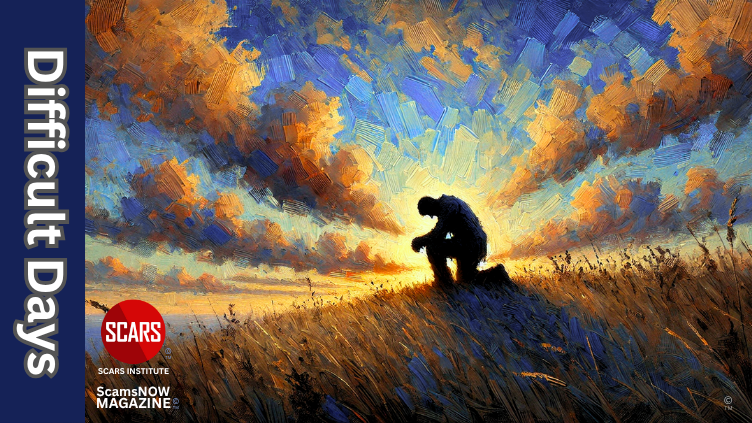
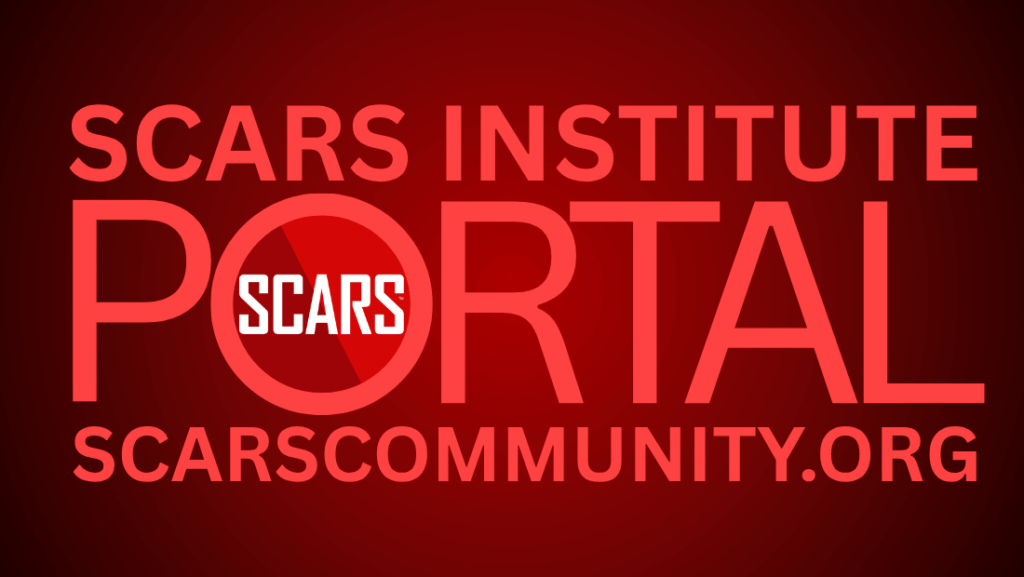






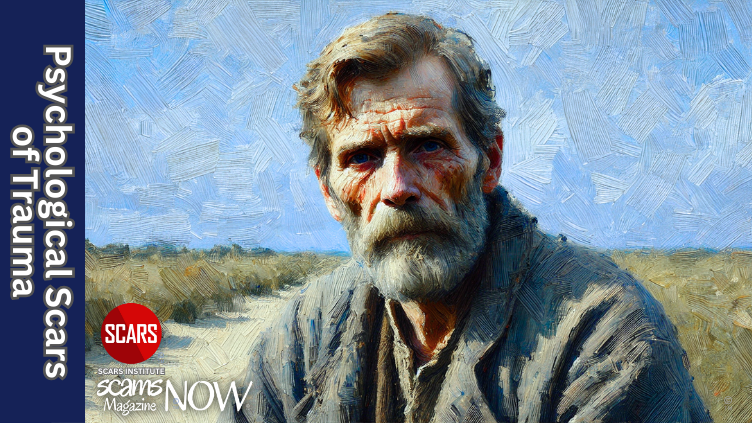
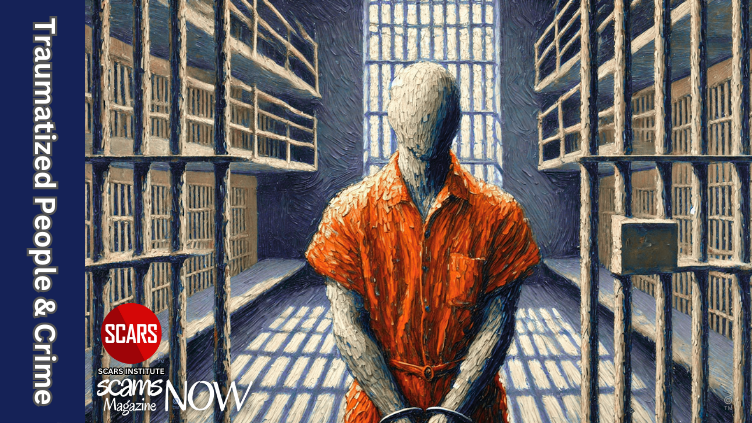




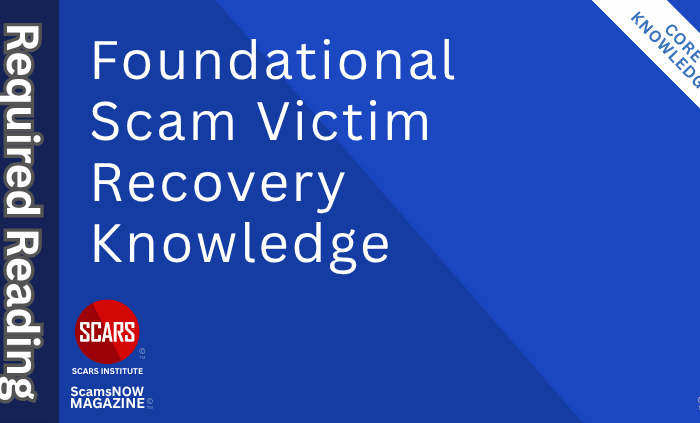

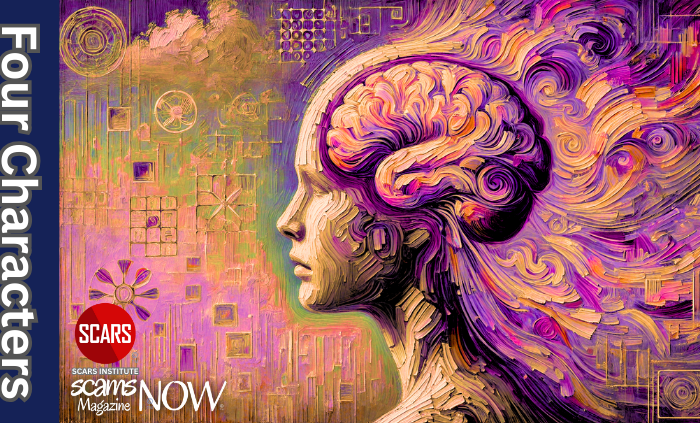





![scars-institute[1] The Evolution of Grief - Why We Have It and Why We Feel It - 2025](https://scamsnow.com/wp-content/uploads/2025/04/scars-institute1.png)
![niprc1.png1_-150×1501-1[1] The Evolution of Grief - Why We Have It and Why We Feel It - 2025](https://scamsnow.com/wp-content/uploads/2025/04/niprc1.png1_-150x1501-11.webp)
